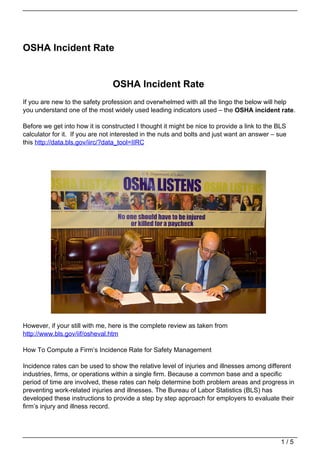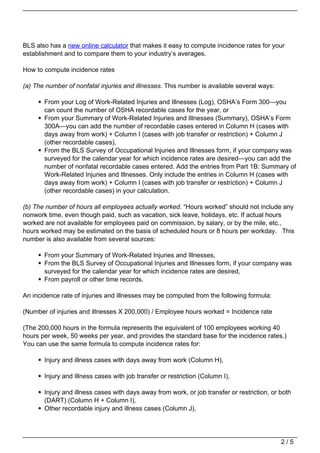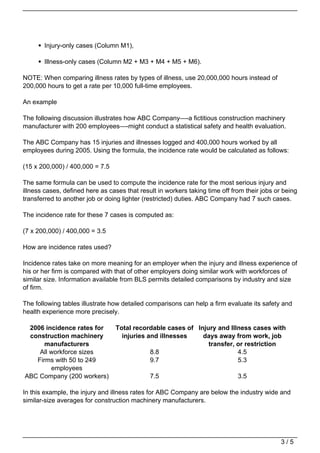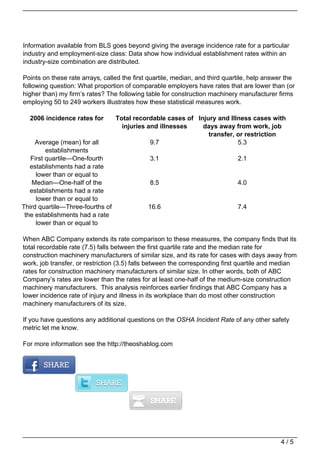The OSHA incident rate is a commonly used safety metric that measures the number of injuries per 100 full-time workers per year. It is calculated by taking the number of injuries multiplied by 200,000 and dividing by the total number of hours worked. This provides a standardized rate that can be used to compare a company's safety performance over time and against industry averages. The document provides an example calculation of an incident rate for a fictional company. It also explains how incidence rates published by the Bureau of Labor Statistics can help companies evaluate how their safety record compares to other firms of similar size within their industry.




